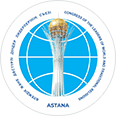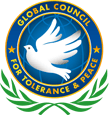Palace of Peace and Reconciliation (The Pyramid)
Brief Description
The Palace of Peace and Reconciliation is a unique pyramidal structure in Astana, designed by architect Norman Foster. It was built as a symbol of unity, peace, and tolerance in Kazakhstan and serves as the venue for the Congress of Leaders of World and Traditional Religions.
Location
- City: Astana (Kazakhstan)
Historical Information
- Date or Period of Founding: The idea for its construction was presented in September 2003 at the 1st Congress of Leaders of World and Traditional Religions. Construction was completed, and the grand opening took place in 2006.
- Key Events Associated with the Site: This is the venue for the Congress of Leaders of World and Traditional Religions, which is held every three years, and the Secretariat of the Congress, which meets annually. It also hosts international congresses, conferences, concerts, and opera performances.
- Significant Figures: The idea for the creation belongs to the First President of Kazakhstan. The building was designed by the world-renowned British architect Norman Foster (Foster and Partners).
Religious Significance
The Palace of Peace and Reconciliation is not associated with any single confession or tradition; instead, it is a secular center for interfaith dialogue. Its main purpose is to serve as a platform for the Congress of Leaders of World and Traditional Religions, where issues of peace, tolerance, and cooperation among various faiths and ethnic groups are discussed.
Cultural and Tourist Significance
- Why Pilgrims and Tourists Visit: Tourists are drawn by the unusual pyramid-shaped architecture developed by Norman Foster. The building also symbolizes the cosmopolitan nature, unity, and friendship of the peoples of Kazakhstan.
- Unique Architectural Features: The height (62 meters) and the length of the base (62 meters) adhere to the "Golden Ratio" principle of Fibonacci. The pyramid is divided into three symbolic levels: the lower part in dark tones (the underworld), the middle part in white (peace/the world), and the glass apex (the sky), which is crowned with a stained-glass window featuring 130 doves, symbolizing the 130 ethnic groups of Kazakhstan. Inside, there is a large Opera (Concert) Hall with unique acoustics, the "Cheops Atrium" (an exhibition area), and a winter garden ("Hanging Gardens of Astana").
Current Status
- Protection and Status: The Palace is a historical and cultural monument of local significance.
- Visitor Access and Infrastructure: The Palace is accessible to visitors as a cultural center. Inside, it houses conference halls, exhibition areas, art galleries, presentation complexes, and the opera hall. Tens of thousands of tourists visit the Palace annually.


















